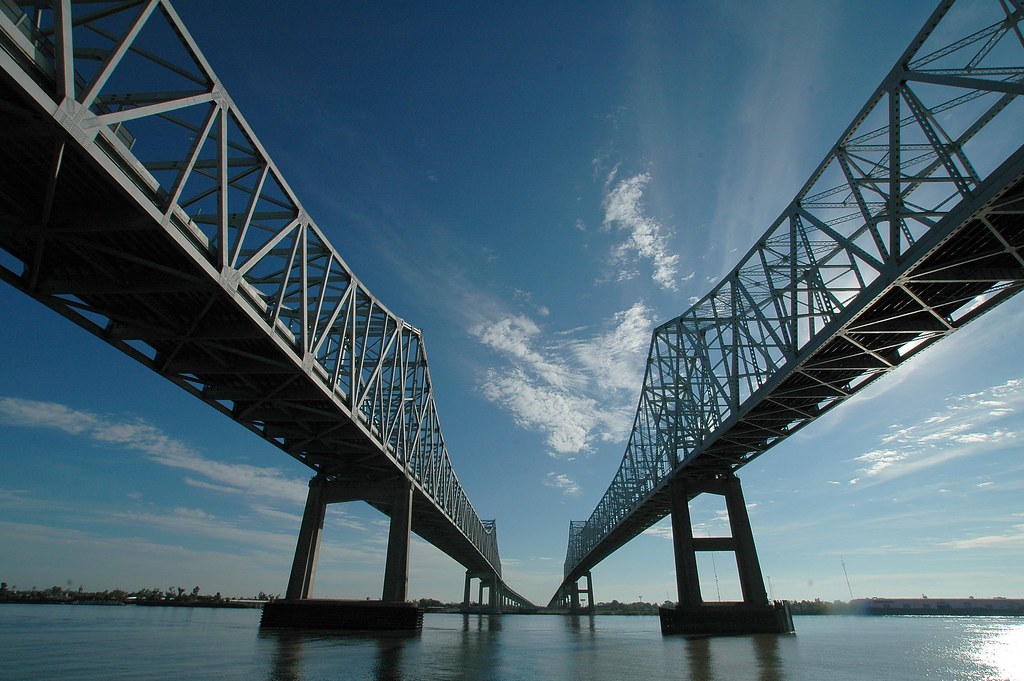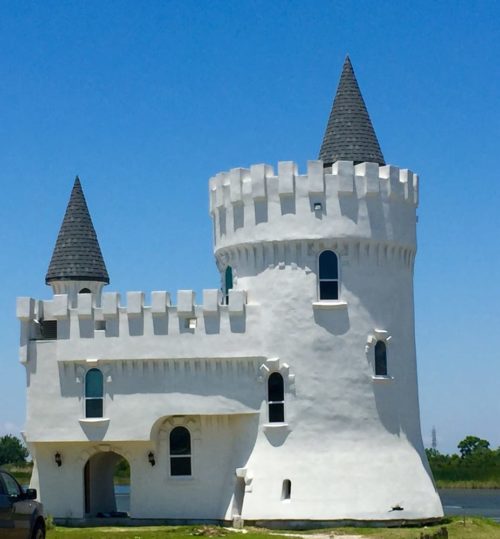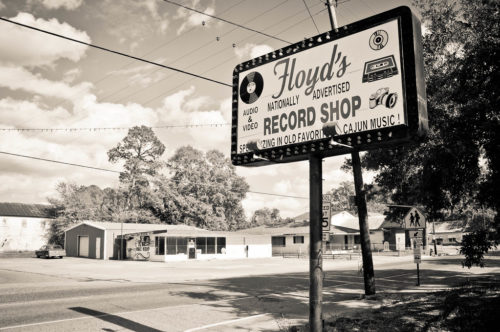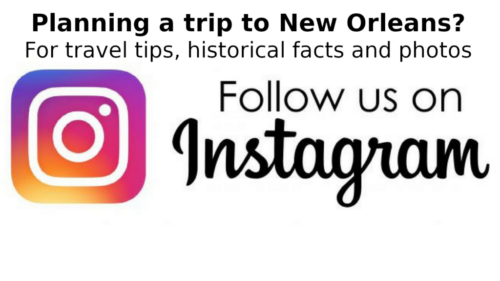Best Day Trips from New Orleans, Louisiana. Self-Guided Driving Tour
New Orleans, Louisiana, is chalk full of things to do. but there is also so much more to explore outside of New Orleans on a day trip. Use this list and the map below to take yourself on a self-guided driving tour of day trips from New Orleans, Louisiana.
If your reading this and thinking “Do I need to rent a car on my visit to New Orleans?” The answer is yes if you’d like to check out the best days trips outside of New Orleans. You can check out Discover Cars to find the best deals on rental cars.
Before leaving the city, start your trip off right with some of the best banh mis found in New Orleans! Founded in East New Orleans at 14207 Chef Menteur Hwy, Dong Phuong Bakery and Restaurant is a local tradition. They first opened 30 years ago and specialize in French pastries and Vietnamese sweets and cuisine. Some feature items include Banh Mi Box and Steamed Bao. They are open every day except Tuesday from 8 am – 5 pm. More information can be found on their website.
Bayou Sauvage National Wildlife Refuge is found within the city limits of New Orleans. The 23,000-acre brackish nature reserve is one of the largest urban wildlife refuges and is integral to the hurricane levees of New Orleans. There are numerous nature trails to explore, and it’s home to a wide variety of wildlife. Make sure to visit the nature reserve’s official page for the most updated information.
Fisherman’s Castle at the Irish Bayou is a small castle built on the Irish Bayou in honor of the 1984 World’s Fair that was held in New Orleans. It is meant to resemble a 14th century French Chateau. It was built strong enough to withstand Hurricanes Katrina and Isaac. Unfortunately, the only way to visit is to view it from the street.
The John C. Stennis Space Center is in Mississippi and is one of ten field stations owned by NASA in the United States. The site was originally founded to assist with the Saturn rockets that were found on the Apollo spaceships. Later on, the NASA location continued to work as a testing site for various rockets used by NASA over the decades. Today, this space center is one of the largest rocket test facilities in the United States and houses the Infinity Science Center. The Infinity Science Center hosts the Stennis Space Center and has many exhibits connected to the work of the space center and about science including meteorology and local ecosystems. This is a place not to be missed. They’re open Thursday – Sunday from 9:00 am – 4 pm; prices of admission can be found on the website.
Boy Scout Road Trail is a hiking trail found in Lacombe, Louisiana, in Big Branch Marsh. The trail is five miles long and takes visitors through a boardwalk trail through the many landscapes of the area. Visitors can try and birdwatch for many of Louisiana’s waterfowl and other native animals. Make sure to follow the visiting hours of Big Branch Marsh to access this hiking trail.
Part of the Tammany Trace Trail that goes from Slidell, Louisiana to Covington, Louisiana. You can park and ride this 7.17-mile trail on your bicycle and it’s a great way to see the Northshore. Park and Ride Slidell Trail is located near various restaurants and shops that you can explore afterward as well. There is also a playground located in downtown Slidell at Heritage Park. Visitors can also visit the 9/11 Memorial Plaza. For more information, including directions and other important news, visit this site.
Located in St. Tammany Parish, Fontainebleau State Park is open daily for exploration. The land was originally owned by Bernard de Marigny in the early 1800s as a sugar mill. There are sources that have documented this area as the home of 153 enslaved persons in 1840. De Marigny was also the founder of the city of Mandeville. This location is on the Louisiana African American Heritage Trail. Today, Fontainebleau State Park hosts overnight camping, a playground, and many areas to explore. There is also a nature trail to hike. Unfortunately, Fontainebleau State Park suffered some damage from Hurricane Ida in 2021, so visit their page for the latest updates and more information.
This park is also accessible via the Tammany Trace bike path.
Mandeville, found in southern Louisiana, was originally a stop steamboat traffic during the mid-19th century and later became a weekend getaway for the residents of New Orleans. Today, Mandeville is a stunning lakefront community rich in history. Mandeville is also home to landmarks such as Ruby’s Roadhouse, a local establishment with a long tradition of jazz that continues today, and other historic sites including The Dew Drop Jazz and Benevolent Social Hall. The Old Mandeville Jail is also worth checking out. Located on 1900 Madison Street, the jail was built in 1938. Despite being built by the city, there was no official record of it. It had red bricks and iron bars. NOLA.com even highlighted the comparisons this jail had to the one found in Mayberry on The Andy Griffith Show. In addition, there are numerous local, quaint eateries and shops to visit as well.
Located in Madisonville, Louisiana, the Lake Pontchartrain Basin Maritime Museum was once the location of the Jahncke Shipyard dating back to 1900. Their exhibits include information about the Jahncke Shipyard exhibit, the Civil War submarine exhibit, information about the lighthouses in Louisiana, learning about steamboats and the steamboat era, and dioramas depicting the Tchefuncte Bayou and 19th-century life in the bayou. It’s open Tuesday – Saturday 1 pm – 4 pm (10 am on Saturdays). Additional information can be found on their website.
Abita Springs is found east of New Orleans in the St. Tammany Parish. Abita Springs is a small town that has been known for its many things. Originally it was known as the home to the Choctaw Native Americans until settlers came to the area in 1820. Later, Abita Springs became known for its medical properties in 1887 found in its springs. It attracted many doctors and patients to try its curable possibilities. Today, Abita Springs continues to host the small-town appeal. They still celebrate the springs with the Abita Springs Water Festival in October
The city offers many things to do and explore. You can explore many local restaurants and sights. Probably one of the most famous places to visit is Abita Brew Pub, home to the same company that owns Abita Brewery. But there is more to see and do. For nature lovers, there is the Abita Springs Trailhead and Park and the Tammany Trace, a 31-mile bike path that stretches from Covington to Slidell. There is also the Abita Springs Museum filled with local art and the Abita Springs Farmers Market. The city also hosts a series of local and musical events including the Abita Springs Opry, the Northshore Cajun Dance, Earth Fest, and Busker Fest. For more information, visit the city’s local page.
The Abita Mystery House/UCM Museum is located outside of New Orleans near Abita Springs. It is an odd museum with folk art, homemade inventions, and other odds and ends located in a vintage gas station. There is something for everyone and was featured on the show American Pickers. Currently, it is closed due to covid/damage from Hurricane Ida. Visit their website for more up-to-date information or give them a call at 985-373-0097.
Abita Trailhead Museum is also found in Abita Springs at 22044 Main Street and is located near the Tammany Trail. This small-town museum features a lot of information about the local history and art of Abita Springs. Exhibits are changing so there is always something new to explore. In addition, the Abita Trailhead Museum features events like Cajun Dance, Push Mow Parade, Busker Festival, the Whole Town Garage Sale, and En Plein Air. Make sure to check their calendar of events to see what is coming up. They’re open Fridays and Saturdays 10 am – 4 pm and on Sundays from 10 am – 3 pm. Admission is free.
Louisiana Highway 22 stretches from Mandeville all the way to Livingston Parish. This stretch of highway offers scenic views that go through rural and suburban roads. Some notable places Highway 22 goes through and is near places like Houmas House Plantation and Gardens and the Lake Maurepas Swamp. One can view a variety of natural sights and quaint places. This twisting road is great for those who love exploring or want to enjoy an exciting motorcycle or car ride.
Avery Island is found in the Iberia Parish of Louisiana and is famously the home of the Tabasco Factory, the makers of the legendary hot sauce. Avery Island itself has more than just the Tabasco factory. It is also home to Jungle Gardens and a bird refuge. Avery Island rests on a huge salt deposit across over 2,000 acres that had served Native Americans and, later, settlers when it was resettled in the early 19th century. Three families (Avery, Marsh, and McIlhenney), all interrelated, have called it home. The Jungle Gardens was founded in 1895 by Edward Avery “Ned” McIlhenny. He continued his conservation efforts and decorated Jungle Gardens with other exotic plants along with the native species. This can still be seen today. People can visit the Tabasco Factory with a self-guided tour or visit Jungle Gardens and do a tour there as well. Visit the respective website for more information.
Ville Platte is the largest part of the Evangeline Parish, found West of New Orleans. Ville Platte, translated roughly to mean “flat town,” is also known as the “Smoked Meat Capital of the World” and is home to the Louisiana Smoked Meat Festival. In addition, Ville Platte also claims the title of the “Swamp Pop Music Capital of the World.” Swamp Pop is a style of music that was popularized in the 1950s. Ville Platte is also home to the Swamp Pop Museum, which is open Friday and Saturday 10 am – 3 pm. Chicot State Park is also located nearby. Ville Platte has many roots in Creole and Cajun culture and influences on Afro-creole zydeco music. Ville Platte offers many things to do and explore.
True Detective is an American anthology crime TV show that was shown on HBO from 2014 to 2019. The first season took place in Vermillion Parish, Louisiana, around the murder of Dora Lange in 1995. One of the more interesting places featured in the backdrop of Louisiana was the tree where the first body was found. The iconic tree that serves as a backdrop is found in Vacherie, Louisiana, and still can be found today.
Oak Alley Plantation is located on the Mississippi River in the St. James Parish of Louisiana. The land was purchased in 1830 by Valcour Aime to grow sugar cane, however, it was later given to his brother-in-law, Jacques Télesphore Roman, who later built Oak Alley. While the plantation was not physically damaged during the Civil War, the war did drive it to financial ruin where it was later sold in 1866. The plantation fell into disrepair until it was bought by private owners in 1920. It was opened to the public in 1972.
The Oak Alley Plantation is an example of Greek Revival architecture and is worth seeing in person up close. At the same time, the plantation still remembers its past and reminds visitors of the slaves who built and maintained the property going to the emancipated laborers who maintained it while living in poor conditions during the 20th century through a self-guided tour. Visitors can also learn about the Oak Alley gardens and Louisiana blacksmithing as well. If you’re interested in taking a tour, contact them and visit the Oak Alley Plantation website for the latest up-to-date information.
Whitney Plantation was founded in 1752 by German immigrants, the Haydels, until it was sold in 1867 to businessman Bradish Johnson. From there it got its name, the Whitney Plantation, from one of Johnson’s daughters. It became a public museum in December 2014. The Whitney Plantation focuses on the history of slavery and remembers the lessons learned from it. It illustrates the history of slavery, how they had to work the trade of indigo and sugar, and slave owners grew profits at the expense of the slaves.
On the property, the main house is an example of French-Creole raised-tradition. There are other buildings including a dovecote, a plantation store, a French Creole barn, and slave quarters. This place is both the National Register of Historic places and the Louisiana African American Heritage Trail. The Whitney Plantation is located at 5099 Highway 18 in Wallace, Louisiana. They are open 9:30 am – 4:30 pm with tours going from 10 am- 4 pm (last entry 3 pm). Visit their website for the most up-to-date information and to schedule a tour.
Chauvin, Louisiana, is a small town located within the Terrebonne Parish. In addition to visiting the quaint town, Chauvin is also home to the Sculpture Park. Found on Bayou Petit Caillou, the park is home to many works of art created by bricklayer Kenny Hill back in 1990. There are over 100 sculptures about Hill’s life including a 45-foot lighthouse to a cowboy. During the course that Hill lived there creating his art, he kept to himself and insisted that his art not be shared. However, he left the property in January 2000 after being evicted. In 2002, it was turned into a park and opened to the public.
Grand Isle is found on one of Louisiana’s southern barrier islands, south of New Orleans, in Jefferson Parish. There are numerous beaches and fishing spots to explore in Grand Isle. For bird lovers, Grand Isle hosts the Grand Isle Migratory Bird Festival every year where people gather to learn about the local wildlife. Grand Isle is also home to Grand Isle State Park, which offers a beach, fishing, and birdwatching opportunities. Unfortunately, the park is temporarily closed due to damage from Hurricane Ida but visit the website for the latest details. Grand Isle is also a great place to visit if you’re into fishing. The barrier island is also home to many conservation efforts to preserve the integrity of Louisiana’s Gulf Coast. Grand Isle also has a wide variety of shops and restaurants to visit. This isn’t a place to be missed; you can learn more about visiting Grand Isle here.
Pirates weren’t just found in the Caribbean, but also Louisiana! John Laffite is the most famous pirate in the area. There is not a lot known about John Laffite, but records show he was residing in New Orleans by 1810. In 1807, the United States banned trading with Great Britain and France. This impacted merchants everywhere, including in New Orleans, and businesses began to run out of supplies to sell. Plantations were also having difficulty finding slaves to work for them. As a result, Laffite stepped in.
The National Park Service points out that Laffite was quick not to associate himself as being a pirate, but a privateer (and even then, the National Park Service emphasizes he considered himself to be more of a businessman). A privateer is commissioned by a government to take ships and supplies at sea on their behalf. Privateers were a common thing throughout the 18th century on all sides. According to the National Park Service, Laffite and his men received their privateer papers from Cartagena (present-day Columbia), but the United States failed to recognize these papers. As a result, Lafitte and his men were seen as pirates. Laffite and his men worked the swamps and lands around Barataria. His men became known as the Barataraians. He established an elaborate operation that included infrastructure and people working for him. During the War of 1812, the British reached out to Lafitte to help wage war against the Americans on their behalf. Instead, Lafitte warned American authorities in exchange for pardons for his men. He helped General Andrew Jackson with his battles in Louisiana and the Battle of New Orleans.
In 1966, Louisiana established the Barataria Reserve, which later became the Jean Lafitte National Historical Park and Reserve. Today, these areas are open and worth exploring. Because Jean Laffite has many connections to history and Louisiana, there isn’t one specific place to visit. Instead, if you want to explore Laffite’s entire story, there are multiple parks and places to visit. You can look at the National Park Service’s official page of Jean Lafitte National Historical Park and Reserve to see what is currently open and the hours of operation.
Taking a swamp tour is another popular option for visitors. Not only can you explore the swamps of John Laffite’s Louisiana, but you can get up-close and personal with the diverse ecosystems of the Gulf coast. There is no other place like it in the country. There are plenty of tour guides and companies that offer swamp tours via airboat, kayak, or boat. But if you’re willing to take time to drive out into the swamps, there are also opportunities to do self-tours as well!
St. Bernard Parish is located south of New Orleans but is still considered part of that metro area. Many original residents were of Spanish descent, became known as “Spanish Cajuns” and even developed their own dialect. St. Bernard’s itself was important following the years after the Civil War where militants tried to suppress the votes of recently emancipated freed African Americans who threatened to vote for Ulysses S. Grant. But today, St. Bernard Parish makes for an ideal day trip while visiting southern Louisiana. If restaurants are your thing, there are numerous cuisines and establishments to eat from. There is also a State Park to explore. In addition, there are many attractions including 40 Apent Wetlands Observatory, Historic Beauregard Courthouse, the Hurricane Katrina Memorial, and the Chalmette Battlefield (this includes the location of the Battle of New Orleans in 1815 where Jean Lafitte helped defeat the British). There is St. Bernard’s State Park to name a few. Nearby St. Bernard’s State Park, you can find Los Isleños Heritage and Cultural Society of St. Bernard, a site dedicated to the cultural history of Los Isleños. You can visit the St. Bernard’s Parish Tourist Commission for more information about the sites and locations.
Shell Beach is a small community found in the St. Bernard Parish of Louisiana. Many original residents of St. Bernard’s Parish were of Spanish descent and made up the Isleños or Spanish Cajuns. As mentioned previously, St. Bernard Parish is a community full of scenic places and cultural experiences to explore. Shell Beach is included in this. It is the perfect place to explore and escape. There is a beach access and areas for fishing and boating. It is also close to Fort Proctor, an abandoned 19th-century fort that can be accessed by boat.






























Hello!
We have a tiki themed floating bar that we offer cruises in Bay St Louis Mississippi.
Please check out our website
Cruisin Tikis Bay St Louis Mississippi
How can we be featured in your best day trips from New Orleans? Most photographed boat on the water !!! One hour from Nola. Closest beach !!! Within 2 hours you can be on a tiki cruise, drink in hand and a suntan !!!! Your tribe ! Your vibe !!! BYOB and we furnish the Captain!